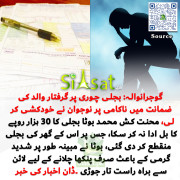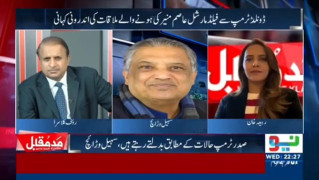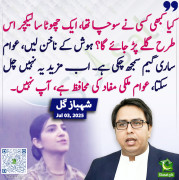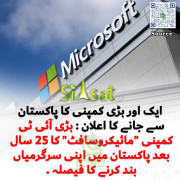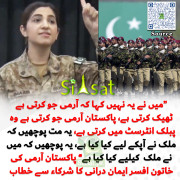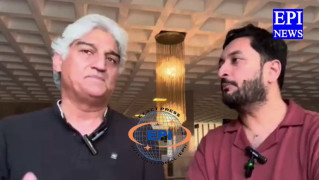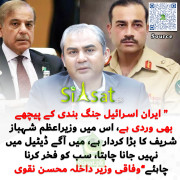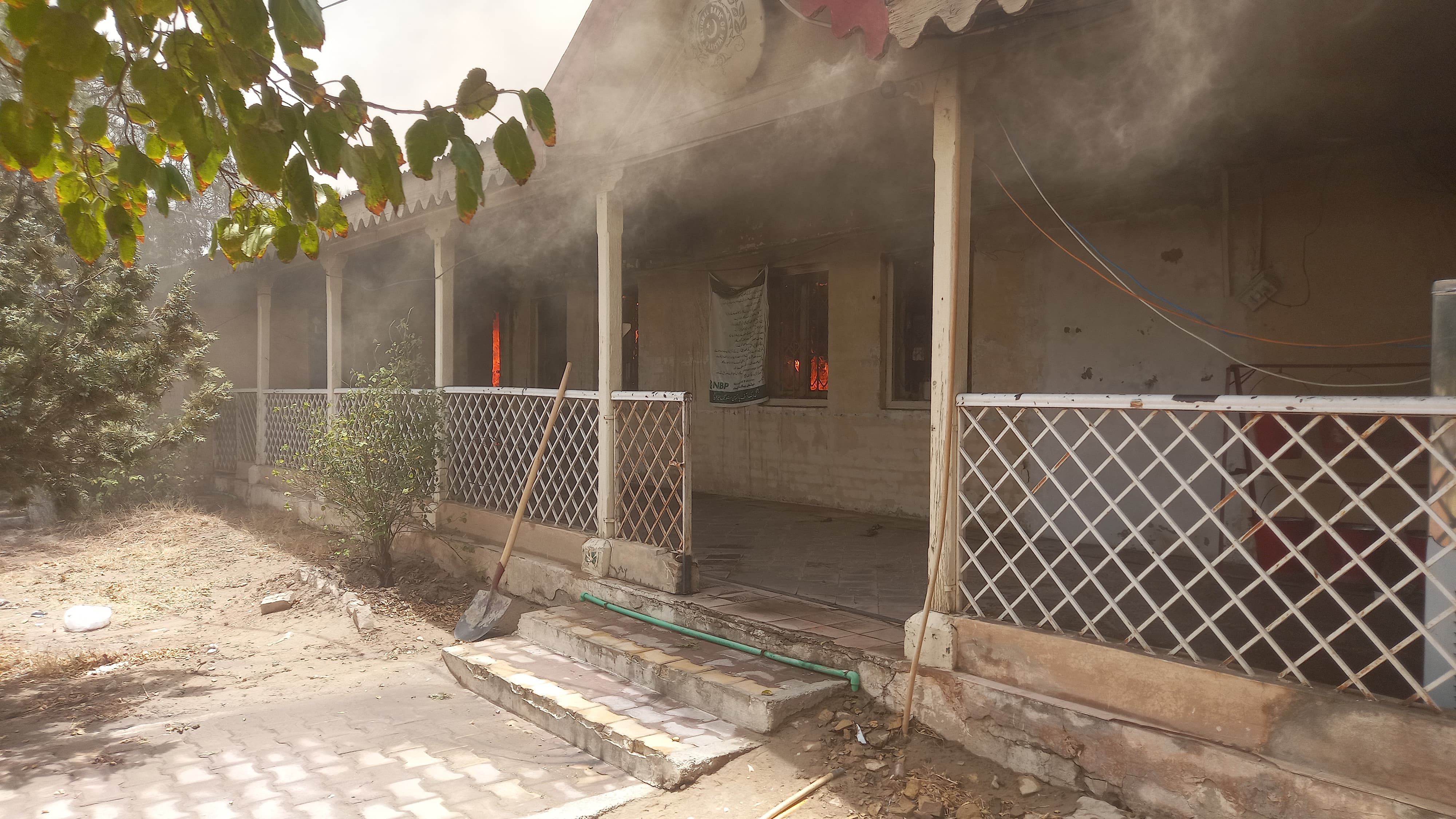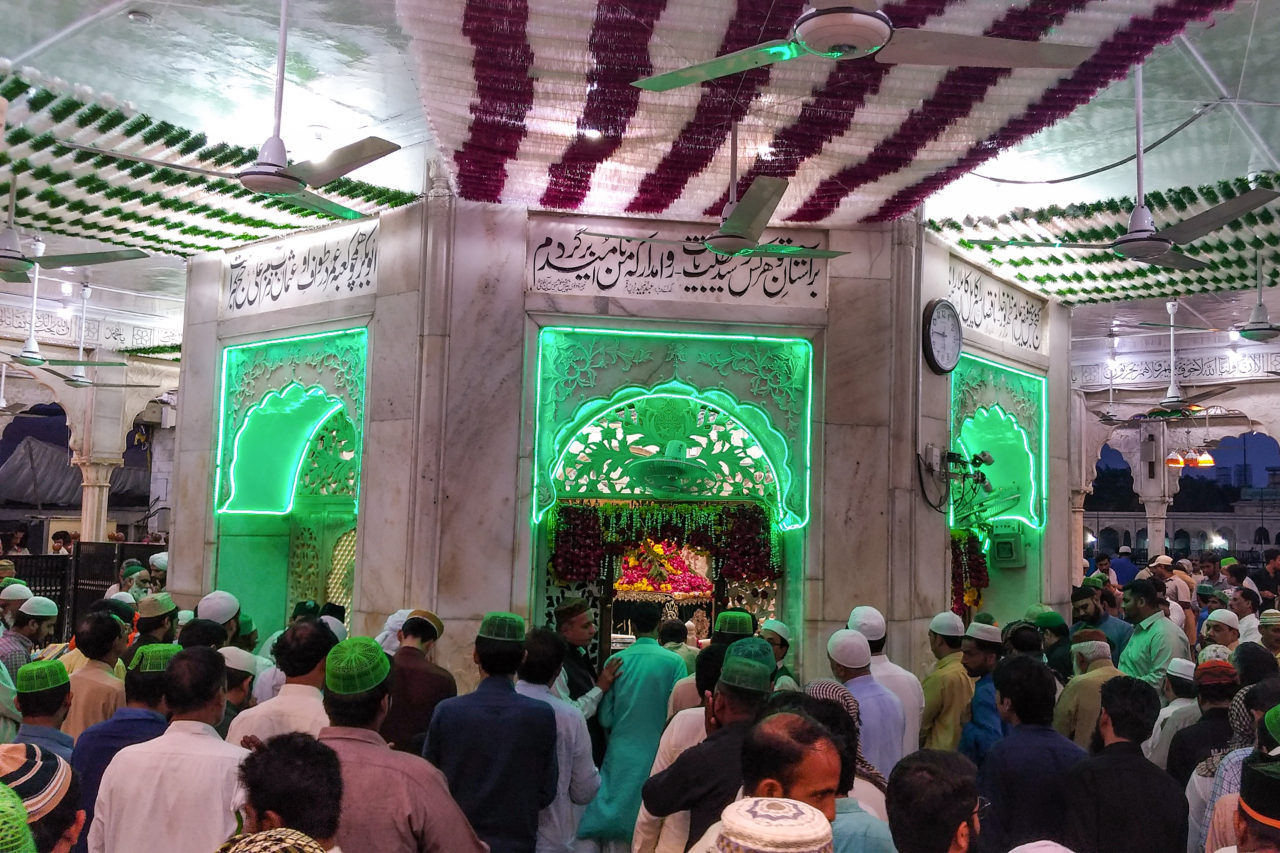Kashmir: A wounded paradise/South Asia's Palestine
Indian and Pakistani narratives on Kashmir have been honed over decades, but why is the issue so crucial to both states?
[TABLE="width: 33"]
[TR]
[TD]
 [/TD]
[/TD]
[/TR]
[TR]
[TD]Is Kashmir the Palestine of south Asia? [GALLO/GETTY]
It was a cold, wet day in October 2008 when I ended a transmission for Al Jazeera with the words: "I'm Imran Khan and I'll be reporting live from the Line of Control."[/TD]
[/TR]
[/TABLE]
It was one of the highlights of my career so far. Myself and Time magazine writer Omar Waraich had travelled up to Pakistan-administered Kashmir, the only two international journalists to do so on that historic day.
What we witnessed was an optimism not seen in a long time. Just six years earlier close to a million troops had been eyeball to eyeball along this de facto border between India and Pakistan.
But now, on this October day in 2008, white pick-up trucks crossed the border after two uniformed men shook hands and declared the rickety bridge that divides the region open. History was made.
It was an amazing sight watching people, some of whom had never seen their relatives who lived on the other side, drive over the line.
I remember wondering out loud what to call the place I was reporting from when Waraich shouted: "You're on the Line of Control!"
I looked around and he was right. I was smack bang in the middle of the place India and Pakistan have fought wars over. I was in the heart of a place that is in the hearts of millions of Pakistanis.
But why does Kashmir hold such a place in the hearts of Pakistanis?
To answer that question I have to delve deep into my own background. I am a British Pakistani. One Friday at a mosque in Manchester, some time in the early 1980s, I remember the imam ending his sermon with a prayer for both Palestine and Kashmir.
I had never heard of either place before, but those names would come up again and again throughout my life.
Writer Musharraf Zaidi has similar memories. He grew up in Toronto, Canada and Kashmir was ever present.
For immigrant communities and for Pakistanis at home, Kashmir has always been part of the conversation. I asked Zaidi why.
"The 'k' in Pakistan stands for Kashmir, the name of Pakistan is not organic, it was engineered .... Pakistan has shed a lot of blood for its commitment to Kashmir," he told me.
That so much blood has been shed goes right to the heart of why Pakistan cares about the fate of Kashmir. According to some reports, 68,000 lives have been lost to the war in this region.
On the surface Pakistan has a policy of encouraging Kashmir to choose its own future - even the name of Pakistan-administered Kashmir is Azad Kashmir, meaning Free Kashmir.
Pakistan does not officially see it as a province of Pakistan and it has autonomy, with its own legislature, president and prime minister.
But delve a little deeper and it is clear that Kashmir has been used by both India and Pakistan for their own ends.
Zaidi says: "Kashmir occupies [a] place in Pakistan like Palestine does in the Muslim psyche. There was, and is, a huge amount of state resources put in to construct a narrative that suits Pakistani interest."
That narrative has been honed over decades. Pakistan has long blamed India for not being serious in its attempts to solve the tragic and bloody conflict.
Put simply Kashmir is Indian territory and no other options are on the table - that is how the story goes. Almost any discussion you have with officialdom in Islamabad on the subject is framed in similar rhetoric: Pakistan has tried all of the options available to it, yet India refuses to budge.
The Pakistani story of Kashmir has been heavily influenced by that of Palestine. You only have to go back to the writings of Muhammad Iqbal, more commonly known as Alama Iqbal, the nation's poet and the man who articulated the dream of Pakistan at the outset of the independence movement.
Iqbal was of Kashmiri stock and took up the cause of Palestine early on. He saw parallels between how Muslims were treated in India and how Zionism was working in Palestine. In 1937, when both Israel and Pakistan were mere ideas, he wrote:
"The injustice meted out to Arabs has touched me intensively as it could touch any person who is conversant with the conditions prevailing in the Near East. This problem provides an opportunity to the world Muslims to declare with all the force at their command that the problem ... is not only the occupation of Palestine but is a problem which will lead to the creation of intense influence on the whole Islamic world."
That same basic story was refined over the years and applied to Kashmir. Replace Palestine with Kashmir, Israel with India and you get the idea. Iqbal and other prominent Indian Muslims took up the cause of Kashmir, which at the time was ruled by a Hindu leader controlling a predominantly Muslim region.
It would be too simplistic to argue that Pakistan cares about Kashmir simply because it encapsulates many of the woes Muslims face today. It is one facet of why Kashmir is so important to Pakistan.
The other reasons are clear. Politics is one. Both India and Pakistan use Kashmir as a stick to beat the other with. Pakistan needs the issue of Kashmir to justify its huge defence spending. The Pakistani army's whole ethos for fighting is directed against India, and the same applies to India. For over 60 years now Pakistan has used the Kashmir issue to rally people around the army domestically.
That has had a huge effect on how Pakistanis see the conflict and on why the army holds such sway over the country.
In recent years, however, Pakistan's influence in Kashmir seems to have been waning. The army has fought a bloody battle on its eastern border with Afghanistan with groups like the Pakistani Taliban, which has drained resources and Pakistan's alleged support for militant groups in Kashmir is, according to one security professional based in Pakistan, also fading. But that is not an assessment many in India would agree with.
So what hope for the future?
Mirza Waheed is a critically acclaimed Kashmiri novelist whose book, The Collaborator, has Kashmir as its backdrop. I asked him that very question.
"For me it's the rise of more and more young people articulating their own narrative and their own politics, their own experience," he says, adding: "That has come about because they didn't see the national media doing the right job. There has been brutal murder on the streets of Srinagar and that has not been reported well in India, so they turned to new media, things like Twitter and Facebook, opened up websites like Kashmirwalla and I'm heartened by that."
But he sounds a note of caution for those that see too much optimism in the future for the place that has been described as the land of poems: "Without real dialogue from both Pakistan and India, including Kashmiris as the principal party, and both sides leaving behind their old entrenched positions change cannot come."
But leaving behind entrenched positions is going to be difficult for both sides. Pakistan has its story on Kashmir - one it wants the world to hear - and India has quite another. So perhaps it is only fitting that we end with the voice of a young Kashmiri, so often forgotten within this forgotten conflict.
His name is Jasim Hamid and he writes on the website Kashmir dispatch. This work is entitled As I Die.
"I am incarcerated, in these dark walls
I see nothing, coerced to smell
Filthy, dirty, plagued floors
You caught me by my collar
Dragged me to these walls
Which I won't call a "place"
Some days ago
Just the sore words I whispered
"We Want Freedom!"
You will whip me, torture me
For your religion is 'shoot to kill'"
The natural beauty of Kashmir may be unrivalled, but it is a place littered with checkpoints and graveyards.
It is a place of soaring mountains, gushing rivers and green meadows considered a utopia by those who visit. But for residents, Kashmir is a place of injustice, death and destruction. It is a wounded paradise where orphanages, military checkpoints and "martyrs'" graveyards disfigure the landscape.
[TABLE="width: 33"]
[TR]
[TD]
 [/TD]
[/TD]
[/TR]
[TR]
[TD]1) Dal Lake is a popular destination among those visiting the Kashmir Valley. But with the eruption of the insurgency in 1989, tourism declined dramatically. In recent years, however, the number of people visiting the region has begun again to climb [Showkat Shafi][/TD]
[/TR]
[/TABLE]
[TABLE="width: 33"]
[TR]
[TD]
 [/TD]
[/TD]
[/TR]
[TR]
[TD]2) The Old City of Srinagar, the capital of Indian-administered Kashmir, has historically been a stronghold for those opposed to Indian rule and has come under siege from Indian forces several times in the past 20 years of conflict [Showkat Shafi][/TD]
[/TR]
[/TABLE]
[TABLE="width: 33"]
[TR]
[TD]
 [/TD]
[/TD]
[/TR]
[TR]
[TD]3) Women offer prayers at Srinagar's politically important Grand Mosque. Post-traumatic stress disorder is thought to be on the rise among Kashmiri women [Showkat Shafi][/TD]
[/TR]
[/TABLE]
[TABLE="width: 33"]
[TR]
[TD]
 [/TD]
[/TD]
[/TR]
[TR]
[TD]4) Indian soldiers stand guard outside a military camp located inside a cinema in the commercial district of Srinagar [Showkat Shafi][/TD]
[/TR]
[/TABLE]
[TABLE="width: 33"]
[TR]
[TD]
 [/TD]
[/TD]
[/TR]
[TR]
[TD]5) Children walk towards their home in Kunan Poshpora village in the Kupwara district, where, according to human rights organisations, at least 31 women - some put the figure as high as 100 - were gang-raped by Indian soldiers on February 23, 1991. Civil rights groups say the Indian army has systematically used rape as a weapon of war in Jammu and Kashmir [Showkat Shafi][/TD]
[/TR]
[/TABLE]
[TABLE="width: 33"]
[TR]
[TD]
 [/TD]
[/TD]
[/TR]
[TR]
[TD]6) Two children play in a field near Dardpora village in the Kupwara district. Almost the entire male population of the village was killed during the early years of the conflict [Showkat Shafi][/TD]
[/TR]
[/TABLE]
[TABLE="width: 33"]
[TR]
[TD]
 [/TD]
[/TD]
[/TR]
[TR]
[TD]7) The entrance to the Lolab valley in northern Kashmir. The area was a rebel stronghold until the year 2000, but it is now controlled by the Indian army who close the gate after dusk to stop any civilian movement into or out of the valley [Showkat Shafi][/TD]
[/TR]
[/TABLE]
[TABLE="width: 33"]
[TR]
[TD]
 [/TD]
[/TD]
[/TR]
[TR]
[TD]8) The ruins of a hotel in Srinagar, where two rebels fought a 22-hour gun battle with Indian forces in early 2010 after they attempted to penetrate a military camp on the other side of the road [Showkat Shafi][/TD]
[/TR]
[/TABLE]
[TABLE="width: 33"]
[TR]
[TD]
 [/TD]
[/TD]
[/TR]
[TR]
[TD]9) Gulzar Ahmad Dar used to be a member of the Jammu and Kashmir Liberation Front (JKLF). He has suffered from mental illness since allegedly being tortured by Indian forces while in captivity. Medical experts say thousands of people in the valley are suffering from post-traumatic stress disorder as a result of the conflict [Showkat Shafi][/TD]
[/TR]
[/TABLE]
[TABLE="width: 33"]
[TR]
[TD]
 [/TD]
[/TD]
[/TR]
[TR]
[TD]10) Shahmali Begum, the mother of Mohammad Maqbool Bhat, the founder of the JKLF who was hanged in a jail in New Delhi in 1984. Two of Begums other sons were killed by Indian forces, another 'disappeared' and a fourth remains in an Indian prison [Showkat Shafi][/TD]
[/TR]
[/TABLE]
[TABLE="width: 33"]
[TR]
[TD]
 [/TD]
[/TD]
[/TR]
[TR]
[TD]11) Husan Bano is a member of the Association of Parents of Disappeared Persons (APDP). Her son, Sayed Anwar, is among the approximately 8,000 people who have 'disappeared' in Jammu and Kashmir [Showkat Shafi][/TD]
[/TR]
[/TABLE]
[TABLE="width: 33"]
[TR]
[TD]
 [/TD]
[/TD]
[/TR]
[TR]
[TD]12) Graves of unidentified men are marked by numbers in the Kupwara district. Civil rights activists have recently claimed to have unearthed the largest unmarked mass grave in Kashmir, where more than 1,000 bodies are thought to have been buried [Showkat Shafi][/TD]
[/TR]
[/TABLE]
[TABLE="width: 33"]
[TR]
[TD]
 [/TD]
[/TD]
[/TR]
[TR]
[TD]13) Indian soldiers take cover after protesters throw rocks at them during a demonstration in Srinagar [Showkat Shafi][/TD]
[/TR]
[/TABLE]
[TABLE="width: 33"]
[TR]
[TD]
 [/TD]
[/TD]
[/TR]
[TR]
[TD]14) Kashmiris raise their hands at a rally against Indian rule in Srinagar in the summer of 2010. Protesters demanding an end to Indian rule held massive rallies in 2008 and 2010, leading to confrontations with the Indian army and severe crackdowns [Showkat Shafi][/TD]
[/TR]
[/TABLE]
[TABLE="width: 33"]
[TR]
[TD]
 [/TD]
[/TD]
[/TR]
[TR]
[TD]15) Analysts suggest stone-throwing has become a symbolic act of resistance employed by a new generation of Kashmiris inspired by the Palestinian intifadas [Showkat Shafi][/TD]
[/TR]
[/TABLE]
[TABLE="width: 33"]
[TR]
[TD]
 [/TD]
[/TD]
[/TR]
[TR]
[TD]16) Bihest-e-Shuhdai-e-Kashmir, or the Paradise of the Martyrs of Kashmir, is the biggest graveyard of Muslim rebels and civilians killed by Indian forces in the past 20 years. There are an estimated 500 such 'martyrs' graveyards' across the region [Showkat Shafi][/TD]
[/TR]
[/TABLE]
http://english.aljazeera.net/indepth/inpictures/2011/08/201181143630563904.html
Indian and Pakistani narratives on Kashmir have been honed over decades, but why is the issue so crucial to both states?
[TABLE="width: 33"]
[TR]
[TD]

[/TR]
[TR]
[TD]Is Kashmir the Palestine of south Asia? [GALLO/GETTY]
It was a cold, wet day in October 2008 when I ended a transmission for Al Jazeera with the words: "I'm Imran Khan and I'll be reporting live from the Line of Control."
[/TR]
[/TABLE]
It was one of the highlights of my career so far. Myself and Time magazine writer Omar Waraich had travelled up to Pakistan-administered Kashmir, the only two international journalists to do so on that historic day.
What we witnessed was an optimism not seen in a long time. Just six years earlier close to a million troops had been eyeball to eyeball along this de facto border between India and Pakistan.
But now, on this October day in 2008, white pick-up trucks crossed the border after two uniformed men shook hands and declared the rickety bridge that divides the region open. History was made.
It was an amazing sight watching people, some of whom had never seen their relatives who lived on the other side, drive over the line.
I remember wondering out loud what to call the place I was reporting from when Waraich shouted: "You're on the Line of Control!"
I looked around and he was right. I was smack bang in the middle of the place India and Pakistan have fought wars over. I was in the heart of a place that is in the hearts of millions of Pakistanis.
But why does Kashmir hold such a place in the hearts of Pakistanis?
To answer that question I have to delve deep into my own background. I am a British Pakistani. One Friday at a mosque in Manchester, some time in the early 1980s, I remember the imam ending his sermon with a prayer for both Palestine and Kashmir.
I had never heard of either place before, but those names would come up again and again throughout my life.
Writer Musharraf Zaidi has similar memories. He grew up in Toronto, Canada and Kashmir was ever present.
For immigrant communities and for Pakistanis at home, Kashmir has always been part of the conversation. I asked Zaidi why.
"The 'k' in Pakistan stands for Kashmir, the name of Pakistan is not organic, it was engineered .... Pakistan has shed a lot of blood for its commitment to Kashmir," he told me.
That so much blood has been shed goes right to the heart of why Pakistan cares about the fate of Kashmir. According to some reports, 68,000 lives have been lost to the war in this region.
On the surface Pakistan has a policy of encouraging Kashmir to choose its own future - even the name of Pakistan-administered Kashmir is Azad Kashmir, meaning Free Kashmir.
Pakistan does not officially see it as a province of Pakistan and it has autonomy, with its own legislature, president and prime minister.
But delve a little deeper and it is clear that Kashmir has been used by both India and Pakistan for their own ends.
Zaidi says: "Kashmir occupies [a] place in Pakistan like Palestine does in the Muslim psyche. There was, and is, a huge amount of state resources put in to construct a narrative that suits Pakistani interest."
That narrative has been honed over decades. Pakistan has long blamed India for not being serious in its attempts to solve the tragic and bloody conflict.
Put simply Kashmir is Indian territory and no other options are on the table - that is how the story goes. Almost any discussion you have with officialdom in Islamabad on the subject is framed in similar rhetoric: Pakistan has tried all of the options available to it, yet India refuses to budge.
The Pakistani story of Kashmir has been heavily influenced by that of Palestine. You only have to go back to the writings of Muhammad Iqbal, more commonly known as Alama Iqbal, the nation's poet and the man who articulated the dream of Pakistan at the outset of the independence movement.
Iqbal was of Kashmiri stock and took up the cause of Palestine early on. He saw parallels between how Muslims were treated in India and how Zionism was working in Palestine. In 1937, when both Israel and Pakistan were mere ideas, he wrote:
"The injustice meted out to Arabs has touched me intensively as it could touch any person who is conversant with the conditions prevailing in the Near East. This problem provides an opportunity to the world Muslims to declare with all the force at their command that the problem ... is not only the occupation of Palestine but is a problem which will lead to the creation of intense influence on the whole Islamic world."
That same basic story was refined over the years and applied to Kashmir. Replace Palestine with Kashmir, Israel with India and you get the idea. Iqbal and other prominent Indian Muslims took up the cause of Kashmir, which at the time was ruled by a Hindu leader controlling a predominantly Muslim region.
It would be too simplistic to argue that Pakistan cares about Kashmir simply because it encapsulates many of the woes Muslims face today. It is one facet of why Kashmir is so important to Pakistan.
The other reasons are clear. Politics is one. Both India and Pakistan use Kashmir as a stick to beat the other with. Pakistan needs the issue of Kashmir to justify its huge defence spending. The Pakistani army's whole ethos for fighting is directed against India, and the same applies to India. For over 60 years now Pakistan has used the Kashmir issue to rally people around the army domestically.
That has had a huge effect on how Pakistanis see the conflict and on why the army holds such sway over the country.
In recent years, however, Pakistan's influence in Kashmir seems to have been waning. The army has fought a bloody battle on its eastern border with Afghanistan with groups like the Pakistani Taliban, which has drained resources and Pakistan's alleged support for militant groups in Kashmir is, according to one security professional based in Pakistan, also fading. But that is not an assessment many in India would agree with.
So what hope for the future?
Mirza Waheed is a critically acclaimed Kashmiri novelist whose book, The Collaborator, has Kashmir as its backdrop. I asked him that very question.
"For me it's the rise of more and more young people articulating their own narrative and their own politics, their own experience," he says, adding: "That has come about because they didn't see the national media doing the right job. There has been brutal murder on the streets of Srinagar and that has not been reported well in India, so they turned to new media, things like Twitter and Facebook, opened up websites like Kashmirwalla and I'm heartened by that."
But he sounds a note of caution for those that see too much optimism in the future for the place that has been described as the land of poems: "Without real dialogue from both Pakistan and India, including Kashmiris as the principal party, and both sides leaving behind their old entrenched positions change cannot come."
But leaving behind entrenched positions is going to be difficult for both sides. Pakistan has its story on Kashmir - one it wants the world to hear - and India has quite another. So perhaps it is only fitting that we end with the voice of a young Kashmiri, so often forgotten within this forgotten conflict.
His name is Jasim Hamid and he writes on the website Kashmir dispatch. This work is entitled As I Die.
"I am incarcerated, in these dark walls
I see nothing, coerced to smell
Filthy, dirty, plagued floors
You caught me by my collar
Dragged me to these walls
Which I won't call a "place"
Some days ago
Just the sore words I whispered
"We Want Freedom!"
You will whip me, torture me
For your religion is 'shoot to kill'"
The natural beauty of Kashmir may be unrivalled, but it is a place littered with checkpoints and graveyards.
It is a place of soaring mountains, gushing rivers and green meadows considered a utopia by those who visit. But for residents, Kashmir is a place of injustice, death and destruction. It is a wounded paradise where orphanages, military checkpoints and "martyrs'" graveyards disfigure the landscape.
[TABLE="width: 33"]
[TR]
[TD]

[/TR]
[TR]
[TD]1) Dal Lake is a popular destination among those visiting the Kashmir Valley. But with the eruption of the insurgency in 1989, tourism declined dramatically. In recent years, however, the number of people visiting the region has begun again to climb [Showkat Shafi][/TD]
[/TR]
[/TABLE]
[TABLE="width: 33"]
[TR]
[TD]

[/TR]
[TR]
[TD]2) The Old City of Srinagar, the capital of Indian-administered Kashmir, has historically been a stronghold for those opposed to Indian rule and has come under siege from Indian forces several times in the past 20 years of conflict [Showkat Shafi][/TD]
[/TR]
[/TABLE]
[TABLE="width: 33"]
[TR]
[TD]

[/TR]
[TR]
[TD]3) Women offer prayers at Srinagar's politically important Grand Mosque. Post-traumatic stress disorder is thought to be on the rise among Kashmiri women [Showkat Shafi][/TD]
[/TR]
[/TABLE]
[TABLE="width: 33"]
[TR]
[TD]

[/TR]
[TR]
[TD]4) Indian soldiers stand guard outside a military camp located inside a cinema in the commercial district of Srinagar [Showkat Shafi][/TD]
[/TR]
[/TABLE]
[TABLE="width: 33"]
[TR]
[TD]

[/TR]
[TR]
[TD]5) Children walk towards their home in Kunan Poshpora village in the Kupwara district, where, according to human rights organisations, at least 31 women - some put the figure as high as 100 - were gang-raped by Indian soldiers on February 23, 1991. Civil rights groups say the Indian army has systematically used rape as a weapon of war in Jammu and Kashmir [Showkat Shafi][/TD]
[/TR]
[/TABLE]
[TABLE="width: 33"]
[TR]
[TD]

[/TR]
[TR]
[TD]6) Two children play in a field near Dardpora village in the Kupwara district. Almost the entire male population of the village was killed during the early years of the conflict [Showkat Shafi][/TD]
[/TR]
[/TABLE]
[TABLE="width: 33"]
[TR]
[TD]

[/TR]
[TR]
[TD]7) The entrance to the Lolab valley in northern Kashmir. The area was a rebel stronghold until the year 2000, but it is now controlled by the Indian army who close the gate after dusk to stop any civilian movement into or out of the valley [Showkat Shafi][/TD]
[/TR]
[/TABLE]
[TABLE="width: 33"]
[TR]
[TD]

[/TR]
[TR]
[TD]8) The ruins of a hotel in Srinagar, where two rebels fought a 22-hour gun battle with Indian forces in early 2010 after they attempted to penetrate a military camp on the other side of the road [Showkat Shafi][/TD]
[/TR]
[/TABLE]
[TABLE="width: 33"]
[TR]
[TD]

[/TR]
[TR]
[TD]9) Gulzar Ahmad Dar used to be a member of the Jammu and Kashmir Liberation Front (JKLF). He has suffered from mental illness since allegedly being tortured by Indian forces while in captivity. Medical experts say thousands of people in the valley are suffering from post-traumatic stress disorder as a result of the conflict [Showkat Shafi][/TD]
[/TR]
[/TABLE]
[TABLE="width: 33"]
[TR]
[TD]

[/TR]
[TR]
[TD]10) Shahmali Begum, the mother of Mohammad Maqbool Bhat, the founder of the JKLF who was hanged in a jail in New Delhi in 1984. Two of Begums other sons were killed by Indian forces, another 'disappeared' and a fourth remains in an Indian prison [Showkat Shafi][/TD]
[/TR]
[/TABLE]
[TABLE="width: 33"]
[TR]
[TD]

[/TR]
[TR]
[TD]11) Husan Bano is a member of the Association of Parents of Disappeared Persons (APDP). Her son, Sayed Anwar, is among the approximately 8,000 people who have 'disappeared' in Jammu and Kashmir [Showkat Shafi][/TD]
[/TR]
[/TABLE]
[TABLE="width: 33"]
[TR]
[TD]

[/TR]
[TR]
[TD]12) Graves of unidentified men are marked by numbers in the Kupwara district. Civil rights activists have recently claimed to have unearthed the largest unmarked mass grave in Kashmir, where more than 1,000 bodies are thought to have been buried [Showkat Shafi][/TD]
[/TR]
[/TABLE]
[TABLE="width: 33"]
[TR]
[TD]

[/TR]
[TR]
[TD]13) Indian soldiers take cover after protesters throw rocks at them during a demonstration in Srinagar [Showkat Shafi][/TD]
[/TR]
[/TABLE]
[TABLE="width: 33"]
[TR]
[TD]

[/TR]
[TR]
[TD]14) Kashmiris raise their hands at a rally against Indian rule in Srinagar in the summer of 2010. Protesters demanding an end to Indian rule held massive rallies in 2008 and 2010, leading to confrontations with the Indian army and severe crackdowns [Showkat Shafi][/TD]
[/TR]
[/TABLE]
[TABLE="width: 33"]
[TR]
[TD]

[/TR]
[TR]
[TD]15) Analysts suggest stone-throwing has become a symbolic act of resistance employed by a new generation of Kashmiris inspired by the Palestinian intifadas [Showkat Shafi][/TD]
[/TR]
[/TABLE]
[TABLE="width: 33"]
[TR]
[TD]

[/TR]
[TR]
[TD]16) Bihest-e-Shuhdai-e-Kashmir, or the Paradise of the Martyrs of Kashmir, is the biggest graveyard of Muslim rebels and civilians killed by Indian forces in the past 20 years. There are an estimated 500 such 'martyrs' graveyards' across the region [Showkat Shafi][/TD]
[/TR]
[/TABLE]
http://english.aljazeera.net/indepth/inpictures/2011/08/201181143630563904.html
Last edited:

